Though a dermatologist is the best type of doctor for spotting a melanoma, there are several other kinds of doctors who are particularly skilled at noticing suspicious spots.
Every year you should get a skin cancer screening by a dermatologist.
You may also want to ask your primary care physician to include a skin exam along with the other basics of your annual physical.
However, there are other kinds of doctors who – due to the nature of their practice – are particularly skilled at visually detecting a suspicious looking spot or lesion on a patient.
“Your eye doctor, dentist and GYN can help monitor for moles in hard to see areas,” says Adam J. Mamelak, MD, a board certified dermatologist and founder of Sanova Dermatology in Austin, TX.
The Eye Doctor
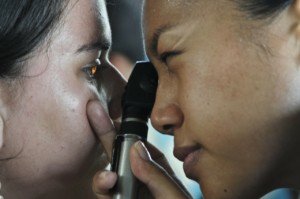
An ophthalmologist – even an optometrist – can spot a suspicious growth in areas about the eye that you would not think to check for melanoma.
For example, do you ever check under your lower eyelid? Yes, melanoma can grow there, even though it gets no sun.
Melanoma can grow in body parts that are as dark as a cave.
Beneath your upper eyelid is also a possible location.
Though melanoma in these locations is extremely rare, you may as well ask your eye doctor to check them once a year, or at least, whenever you get your eyes examined.
Moles can also grow in the back of an eye, not visible to you, but visible to an eye doctor through special equipment. Ask him if he sees any moles there. A mole in this location is called a choroidal nevus.
These “eye freckles” may need to be tracked, just like any other mole on your body, as part of your melanoma screening regimen.
Finally, melanoma can occur in the pupil, iris and white of your eye. An ophthalmologist or optometrist should notice any abnormal looking growths in these areas, but it never hurts to ask him to check for such.
The Dentist
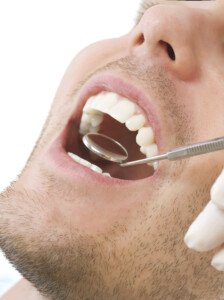
Shutterstock/ubbotina Anna
“As part of dental assessment, dentists check inside the mouth and around the jaw, face and neck regions,” says Brijesh Chandwani, DMD, BDS, Diplomate, American Board of Orofacial Pain, with Connecticut & NY TMJ.
“While dentists do not assess the neck and face as thoroughly as an oncologist or an ENT physician, they are well-equipped to screen for abnormality.
“When it comes to inside the mouth, dentists do a very thorough evaluation including any abnormal moles or white spots.
“Melanoma within the mouth are very rare, but I have referred about two patients in the last year for further assessment from ENT physician (only to find out that both were benign presentation).”
A dentist gets a very up-close look at every patient’s face, neck and under their chin.
If there’s a melanoma or other type of skin cancer growing there, a dentist will invariably notice it.
Though all dentists are trained to notice suspicious growths inside the mouth, and can’t help but notice them on the face, lips and neck, a dentist can’t put these skills to use if you neglect to see a dentist due to anxiety, embarrassment over your teeth or lack of insurance.
Don’t wait till you have a toothache or pain when chewing to see a dentist. Melanoma screening is one more great reason to visit the dentist twice a year.
The OBGYN
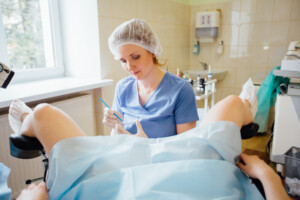
Shutterstock/Iryna Inshyna
Melanoma is so ruthless it can even grow in the genital area – not just externally but even internally – though these locations are exceedingly rare.
Many women don’t get yearly gynecological exams, either due to the discomfort, embarrassment over their body weight, lack of insurance or not remembering to do so.
If you’ve been putting off seeing an OBGYN for any of these reasons, you now have a new reason to go: melanoma screening.
The same principle applies to men and a yearly urological exam.
The ENT
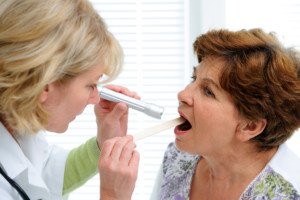
Shutterstock/Alexander Raths
An ear, nose and throat physician will notice abnormal growths inside the mouth, inside the nose and externally around these regions including the neck.
Though you may not be seeing an ENT doctor every year for mere routine screenings for general otolaryngology health, it’s nice to know that if you do ever see one for any reason, he or she will be able to spot what could be a melanoma.
Can these other kinds of doctors diagnose melanoma?
Though some types of doctors other than dermatologists are particularly skilled at detecting a suspicious mole or lesion, they can only point out the suspicious growth to their patient and strongly recommend that they see a dermatologist.
A dermatologist will then determine if the spot should be biopsied.
And only a biopsy can yield an official diagnosis of melanoma.
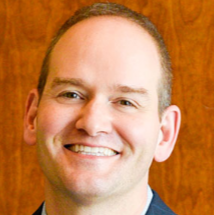 Dr. Mamelak focuses on the full breadth of dermatologic care, from cosmetic skin solutions to advanced skin cancer removal. He’s founder of the Austin Mohs Surgery Center, which is dedicated to the treatment and management of skin cancer.
Dr. Mamelak focuses on the full breadth of dermatologic care, from cosmetic skin solutions to advanced skin cancer removal. He’s founder of the Austin Mohs Surgery Center, which is dedicated to the treatment and management of skin cancer.
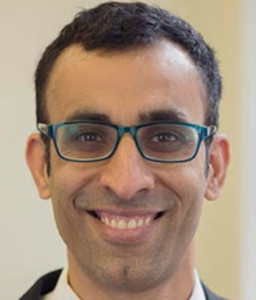
Dr. Chandwani has 15+ years of experience focusing on TMJ disorders and sleep disorders.
 Lorra Garrick has been covering medical, fitness and cybersecurity topics for many years, having written thousands of articles for print magazines and websites, including as a ghostwriter. She’s also a former ACE-certified personal trainer.
Lorra Garrick has been covering medical, fitness and cybersecurity topics for many years, having written thousands of articles for print magazines and websites, including as a ghostwriter. She’s also a former ACE-certified personal trainer.
.










































